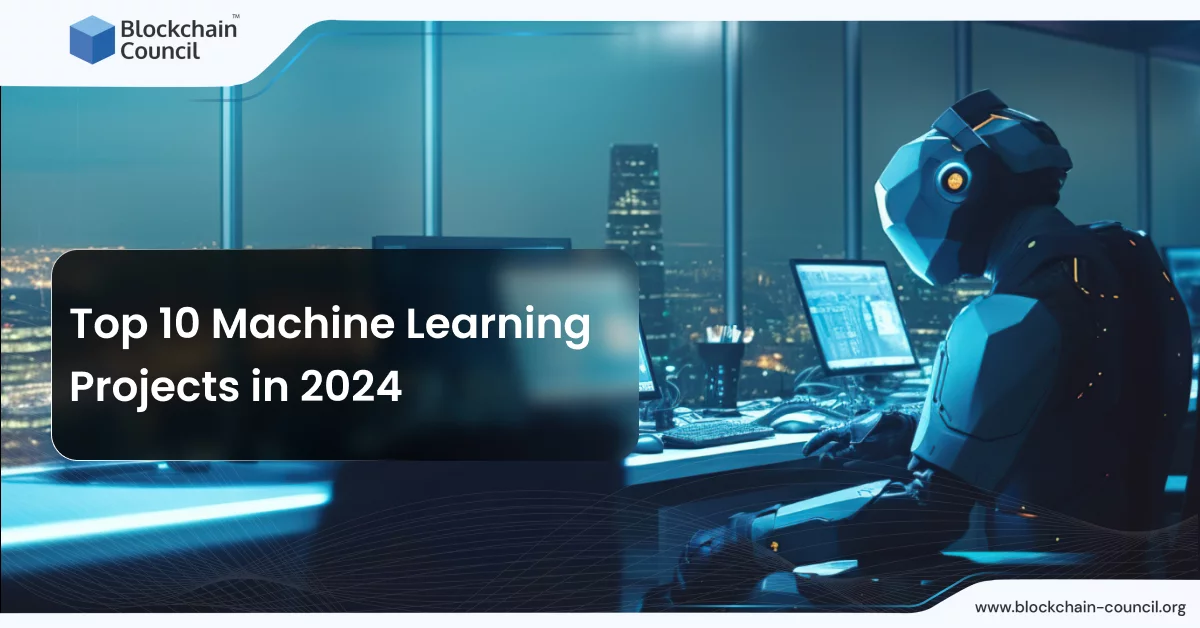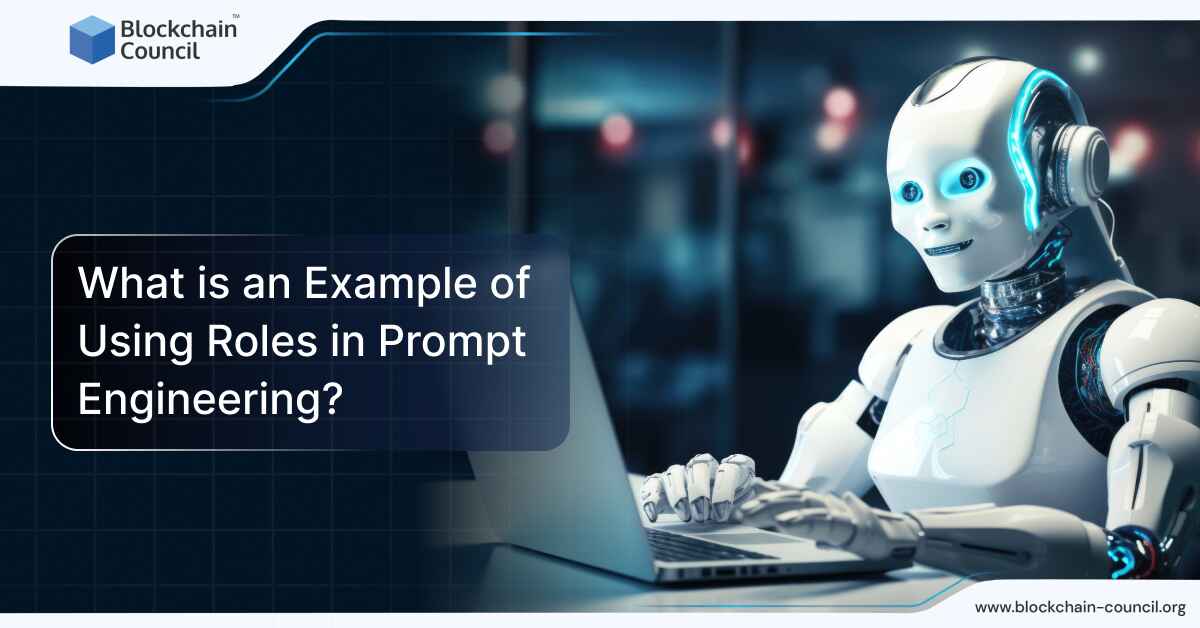
- Blockchain Council
- January 17, 2025
In the dynamic world of technology, machine learning (ML) continues to stand at the forefront of innovation, reshaping industries and defining the technological landscape of our times. As we step into 2025, it becomes essential to stay abreast of the top machine learning projects that are setting trends and pushing boundaries. This article delves into the most groundbreaking ML projects of 2025, offering insights into how these technologies are transforming businesses, enhancing efficiency, and opening new frontiers in data analysis and application. From the automated ease of AutoML to the precision of Handwritten Digit Recognition, the transformative power of Reinforcement Learning, and the operational efficiency of MLOps, each project signifies a leap towards a more interconnected and intelligent future. Whether you are a seasoned data scientist, an aspiring ML enthusiast, or a business leader looking to leverage the power of AI, this exploration provides a comprehensive understanding of the cutting-edge developments in machine learning.
Top Machine Learning Projects in 2025
No-code Machine Learning Platforms
In 2023, no-code and low-code machine learning platforms emerged as a leading trend in artificial intelligence and machine learning. As AI and ML evolved from niche technologies to mainstream applications, the need for accessible machine learning solutions became evident. This led to the rise of custom ML solutions that require no coding from the user. These platforms, known as no-code AI, utilize GUI-based coding where users can simply drag and drop pieces or select desired settings, while the platform handles the actual coding in the background. This approach has opened up the field to a new wave of users, breaking down technical barriers and paving the way for numerous new machine learning applications.
Stock Price Predictor using Time Series
Time series forecasting, which predicts future values based on previously observed values, has proven to be one of the best tools for trend analysis and future prediction in stock markets. The stock market, known for its unpredictability, has seen the recent integration of machine learning and deep learning for more reliable trend analysis. A popular method in this domain is the ARIMA model, known for its robustness and efficiency in short-term share market prediction. This model, along with exponential smoothing, is extensively used for its capability to predict linear time series data and its potential to generate more accurate predictive models on financial data.
Quantum Machine Learning
Quantum machine learning is rapidly maturing and is anticipated to be a major tool for both enterprises and potential hackers. One of its most promising use cases is in creating more accurate predictive models with less training data. Quantum computing, which allows data to exist in multiple states, enriches the information quantum bytes can contain. This leads to the development of much more complex models than those possible with current advanced hardware. For businesses, this means better-targeted content without needing extensive data. In cybersecurity, quantum machine learning could significantly improve synthetic media detectors and predict potential attacks more accurately, thus enabling better-prepared defenses against cyber threats.
TinyML
Tiny machine learning, or TinyML, has been a significant trend, predicted to grow from nearly 2 billion device installs in 2022 to over 11 billion by 2027. TinyML brings machine learning capabilities to small, low-power devices like microcontrollers in appliances, wearable devices, and IoT devices. This shift from cloud-based computation to local, on-device computation offers benefits like speed, privacy, and reduced power consumption. An application of TinyML is in real-time, on-device decision making, such as a health tracker analyzing vital signs and alerting to abnormal readings without constant cloud communication, thus saving bandwidth and enhancing privacy.
AutoML
Automated Machine Learning (AutoML) has been a significant trend in 2024. It focuses on improving tools for labeling data and automatically tuning neural net architectures. By automating the selection and tuning of neural network models, AI becomes more cost-effective, and new solutions reach the market faster. This trend is expected to continue into 2025, making machine learning more accessible and efficient. Gartner predicts a focus on improving various processes required to operationalize these models, including PlatformOps, MLOps, and DataOps, collectively termed XOps.
Certified Blockchain Developer™
15 Hours | Self-Paced
Join Now
Histopathologic Cancer Detection Using ML
Histopathologic Cancer Detection stands out as a leading machine learning project in 2025. Leveraging the power of deep learning, this project focuses on automating cancer detection and diagnosis through the analysis of histology images obtained from tissue samples. The project involves intricate image-processing steps to handle large whole-slide histology images, including preprocessing of image tiles and training a deep learning classifier. The applications range from automating routine tasks like tumor detection and grading to advanced functionalities such as predicting genetic mutations and survival directly from stained tissue slides. Despite its potential, the project faces challenges in clinically validating basic machine learning methods, as ongoing research aims to assess their real-world effectiveness compared to expert pathologists. This initiative represents a cutting-edge application of machine learning, holding significant promise for advancing cancer diagnosis and treatment in 2025.
Handwritten Digit Recognition
Handwritten Digit Recognition (HDR) continues to be a prominent area in machine learning, essential for information processing and manipulation. Recent advancements include the EfficientDet-D4 model, demonstrating high accuracy in numeral recognition from images, even with various writing styles and artifacts like noise or blurring. These developments make HDR more effective and efficient, with applications ranging from automated number plate detection to analyzing medical receipts and historic documents. The continuous improvement in deep learning approaches for HDR ensures that these systems will become more robust and efficient, capable of handling complex real-world scenarios.
MLOps
Machine Learning Operations (MLOps) has emerged as a critical link between machine learning, data science, and data engineering. Key trends in MLOps for 2023, which are likely to extend into 2025, include a data-centric approach to streamline machine learning pipelines, the ability to identify data drift in ML models, and enhancing the value of ML solutions in business contexts. MLOps is also seeing an increase in the number of libraries and packages for various tasks, indicating a shift towards more standardized and streamlined processes. The integration of MLOps remains challenging, but tools like Metaflow are simplifying workflow design and deployment. Furthermore, the transition from AutoML to AutoMLOps and the mainstream usage of feature stores are significant trends shaping the future of MLOps
CIFAR-10 – Object Recognition in Images
CIFAR-10, a benchmark in machine learning for object recognition in images, continues to be a crucial project in the field. As we step into 2025, the latest advancements in CIFAR-10 involve the integration of more advanced neural networks and deep learning techniques to improve accuracy and efficiency in object recognition. The project, which consists of 60,000 32×32 color images in 10 different classes, has been instrumental in pushing the boundaries of image classification. Key advancements include the application of sophisticated convolutional neural network (CNN) architectures and enhancements in image processing techniques. The integration of transfer learning and the application of more robust data augmentation strategies have also been notable. These improvements have led to more accurate and faster object recognition, making CIFAR-10 a cornerstone in machine learning research and applications ranging from autonomous vehicles to surveillance systems.
IEEE-CIS Fraud Detection
The IEEE Computational Intelligence Society’s (IEEE-CIS) Fraud Detection project is a major initiative in the field of machine learning, particularly in the domain of financial security. In 2025, this project remains at the forefront of combating financial fraud using advanced machine learning techniques. The project leverages a comprehensive dataset that includes a wide range of features derived from real-world transactions, making it one of the most extensive and challenging datasets for fraud detection.
Recent trends in this project include the use of sophisticated algorithms such as deep learning and ensemble methods to improve the detection of fraudulent activities. There’s a significant emphasis on balancing accuracy and speed, ensuring that fraud detection models are not only effective but also efficient enough to process transactions in real-time. The project also focuses on addressing the challenge of class imbalance, a common issue in fraud detection where legitimate transactions vastly outnumber fraudulent ones. Techniques like synthetic data generation and advanced sampling methods have been employed to overcome this challenge.
Conclusion
As we conclude our journey through the top machine learning projects of 2025, it’s clear that the field of AI and ML is not just evolving; it’s revolutionizing the way we interact with technology. The projects we’ve discussed – AutoML, Reinforcement Learning, Handwritten Digit Recognition, and MLOps – are not just mere technological advancements; they are the harbingers of a new era where efficiency, precision, and automation become the cornerstones of digital transformation. These projects are reshaping industries, from healthcare to finance, and are pivotal in driving the next phase of digital innovation. As machine learning continues to mature, its integration into various sectors will undoubtedly unlock new possibilities, making technology more adaptive, intuitive, and beneficial for all. This exploration into the top ML projects of 2025 not only underscores the rapid progression in AI but also sets the stage for future innovations that will continue to redefine the boundaries of what’s possible with machine learning.





































































 Guides
Guides News
News Blockchain
Blockchain Cryptocurrency
& Digital Assets
Cryptocurrency
& Digital Assets Web3
Web3 Metaverse & NFTs
Metaverse & NFTs
